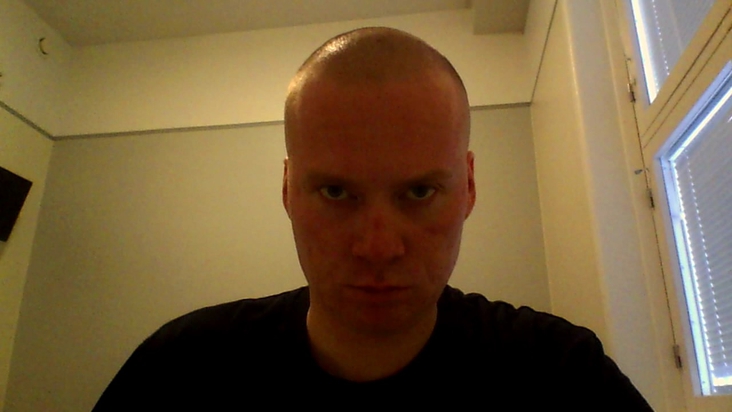
If I am elected I will work to the best of my ability to ensure Asgardia is becomes an efficient, recognized and fully operational nation.
I believe that if we conduct ourselves professionally,we will prove our nation to be a worthy and beneficial addition ...
Cosmic debris such as meteors pose a significant threat — how is technology shaping up to meet it?
For the inhabitants of the Russian city of Chelyabinsk, the events of 15 February 2013 will never be forgotten. Just after 9.00am, a 20m-diameter meteorite exploded above ...
Clouds moving in the martian sky have been observed previously by Curiosity and other missions on the surface of Mars, including NASA's Phoenix Mars Lander in the martian arctic nine years ago.
WASHINGTON: NASA's Mars Curiosity rover has captured its most clearly visible images of ...
If you're a little bored of life on Earth, have no fear; scientists have discovered two potentially habitable planets orbiting a sun just 12 light-years away.
The team of astronomers which includes researchers from the UK's University of ...
NASA's New Horizons spacecraft may double its pleasure during its next deep-space flyby 16 months from now.
On Jan. 1, 2019, New Horizons is scheduled to have a close encounter with a body called 2014 MU69, which lies 1 billion miles (1.6 billion kilometers) ...
A huge, superhot alien planet has a stratrosphere, like Earth does, a new study suggests.
"This result is exciting because it shows that a common trait of most of the atmospheres in our solar system — a warm stratosphere — also can be found ...
''The Orion Nebula is one of the most heavily studied astronomical targets in the night sky, but that doesn't mean it has stopped surprising astronomers. In fact, new work suggests that its many young stars formed in three distinct waves, over just a few million years.
As ...
''During the total solar eclipse on Aug. 21 , skywatchers will direct most of their attention to the sun, but don't forget about the moon: Its slow progress away from Earth means these celestial events won't keep happening forever.
Next month's total solar eclipse ...
''The
Cassini spacecraft at Saturn
recently observed a light show on the planet's southern hemisphere: auroras, glittering in the gaseous atmosphere.
Similar to auroras on Earth, Saturn's auroras are formed by charged particles raining down on the planet, colliding with ...
''We all have stars in our eyes. And in our hearts, our fingers … right down to our toes.
And we all may have come from a galaxy far, far away.
A groundbreaking new study suggests that half the atoms that ...
''An ultrapowerful, superfast explosion in space is providing new insight into how dying stars turn into black holes.
An international team of researchers looked at a gamma-ray explosion called GRB 160625B that brightened the sky in June 2016. Gamma-ray bursts are among the most powerful ...
This could be relevant to Asgardia as well.
''Ancient volcanic deposits on the moon reveal new evidence about the lunar interior, suggesting it contains substantial amounts of water.
Using satellite data, scientists from Brown University studied lunar pyroclastic deposits, layers of rock that likely
''It looks like a glowing speck or star moving swiftly around the surface of Mars. The tiny moon Phobos orbits the red planet in a new time-lapse video released by NASA. The Hubble Space Telescope captured a series of 13 images of Mars over the course ...
Scientists have discovered mystery signals coming from a star 11 light-years away. The “very peculiar” pulses appear to be unique to the red dwarf, scientists say, with observations of similar nearby stars showing no similar behavior.
Researchers at the Arecibo Observatory, in Puerto Rico, were observing a ...
''Landing on the Red Planet is one of the biggest challenges in spaceflight, so hard that the problem is referred as the Great Galactic Ghoul.''
''NASA's Journey to Mars might be officially dead. That is, the agency doesn't seem likely to land an astronaut on the Red ...
I would have preferred NASA to do the job. I've never enjoyed the thought of private corporations conquering space instead of state owned players.
''A new telescope in La Palma, in Spain's Canary Islands, coordinates with gravitational-wave detectors to track down optical signals of the colossal collisions that cause them.
The Gravitational-wave Optical Transient Observer (GOTO), built as an international collaboration led by the U.K.'s University of Warwick and Australia's Monash ...
''The frigid, faraway body that NASA's New Horizons spacecraft will zoom by 18 months from now may actually be a cluster of small objects, new observations suggest.
New Horizons — which performed the first-ever flyby of Pluto in July 2015 — ...
''Brown dwarfs, or failed stars that resemble rogue planets, are far more abundant than astronomers previously thought. A whopping 100 billion of the small, dim celestial bodies could be lurking throughout the Milky Way, new research suggests. ''
https://www.space.com/37401-100-billion-brown-dwarfs-milky-way.html
''The Martian surface may be even less hospitable to life than scientists had thought.
Ultraviolet (UV) radiation streaming from the sun "activates" chlorine compounds in the Red Planet's soil, turning them into potent microbe-killers, a new study suggests.
The Martian surface may ...
I always take it as a good thing when we learn something new, it brings us closer to the level we need to be to do stuff safely.
And we sure don't need more problems besides the all we already know about on our way to serious ...
I always take it as a good thing when we learn something new, it brings us closer to the level we need to be to do stuff safely.
And we sure don't need more problems besides the all we already know about on our way to serious ...
''The speediest stars zipping through the Milky Way galaxy are runaways from a small neighboring galaxy, according to a new study.
Scientists said they suspect that around 10,000 of these so-called "hypervelocity" stars in the Milky Way were born in a small satellite galaxy known as the ...



